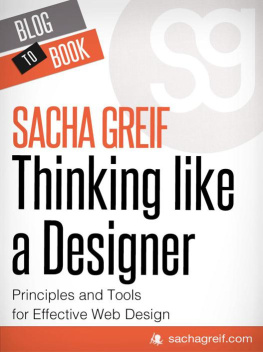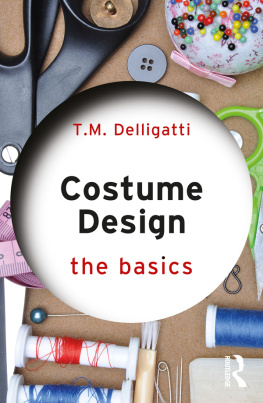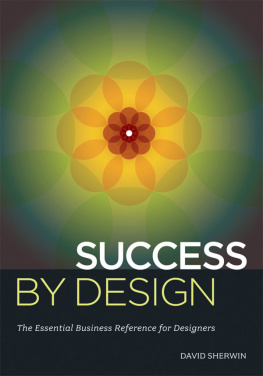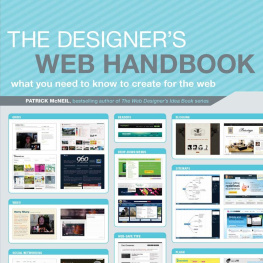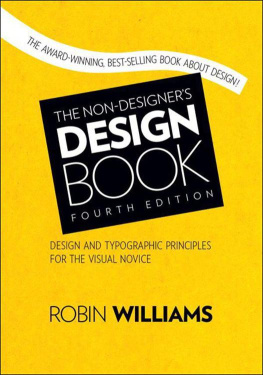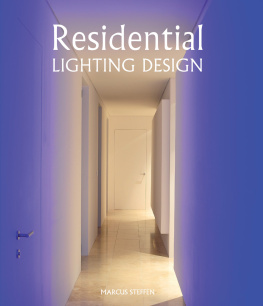Sacha Greif - Thinking Like A Designer: Principles and Tools for Effective Web Design
Here you can read online Sacha Greif - Thinking Like A Designer: Principles and Tools for Effective Web Design full text of the book (entire story) in english for free. Download pdf and epub, get meaning, cover and reviews about this ebook. year: 2012, publisher: Hyperink, genre: Romance novel. Description of the work, (preface) as well as reviews are available. Best literature library LitArk.com created for fans of good reading and offers a wide selection of genres:
Romance novel
Science fiction
Adventure
Detective
Science
History
Home and family
Prose
Art
Politics
Computer
Non-fiction
Religion
Business
Children
Humor
Choose a favorite category and find really read worthwhile books. Enjoy immersion in the world of imagination, feel the emotions of the characters or learn something new for yourself, make an fascinating discovery.
- Book:Thinking Like A Designer: Principles and Tools for Effective Web Design
- Author:
- Publisher:Hyperink
- Genre:
- Year:2012
- Rating:5 / 5
- Favourites:Add to favourites
- Your mark:
Thinking Like A Designer: Principles and Tools for Effective Web Design: summary, description and annotation
We offer to read an annotation, description, summary or preface (depends on what the author of the book "Thinking Like A Designer: Principles and Tools for Effective Web Design" wrote himself). If you haven't found the necessary information about the book — write in the comments, we will try to find it.
NOTE FROM THE AUTHOR
I have a confession to make: I call myself a designer, but I never went to design school, only worked in a web agency for a couple months, and learned what I know by reading blogs and following along tutorials. I think this is one of the reasons why I love writing and blogging: it gives me a chance to give back and in turn help aspiring designers just like I was helped myself. And I also blog because I want to show that although good design can often feel magical, the process itself isnt: its just about mastering the basics, and a lot of hard work. If I can do it, I believe you probably can as well. So what you have here is a selection of the most interesting articles Ive written over the past couple years. All I hope is that they will help make a long plane ride a little bit shorter, and just maybe give you some new perspectives on design.
EXCERPT FROM THE BOOK
User Experience is a term you hear thrown around a whole lot lately. For some people it means the way a site looks and feels, for others its all about a sites architecture, but for most of them its just an empty buzzword that doesnt mean anything at all. User experience is all that and much more. It literally is what users think and feel while using your product. UX Is Everywhere If your site has a painless sign-up process, thats part of the user experience. If your site uses gorgeous photos, thats part of the user experience. If your site is unbearably slow, thats UX too. And if your site is perfect, but theres a bug in your code and you end up charging people twice as much for your product, well guess what, thats also part of their (very bad) user experience. So user experience design can include web design, photography, speed optimization, coding, to say nothing of copywriting, branding, security, interaction design, or information architecture. Were All User Experience Designers It logically follows that someone who calls himself a user experience designers should be involved in every one of those aspects. But instead, actual user experience designers usually come in during the early stages of a project, and use wireframes and prototypes to plan out design, architecture, and interactions. Dont get me wrong, Im not saying its not a real job. But I feel like it should be called something else, like maybe Prototype Designer or User Experience Consultant if the person comes in at a later stage to analyze an existing site. In my mind, the title of User Experience Designer does not belong to a single person. Instead, it should be embraced by everybody contributing to the project, whether they are a designer, coder, photographer, writer, or systems administrator. Because after all, their work is what ultimately defines the users experience. Can You Add More UX to It? Why is that important at all? Isnt all this just a question of semantics? Well, yes, it is. But bad semantics lead to bad communication, and that in turn leads to bad results. Its not uncommon to hear clients asking if you do UX or asking a designer if they focus on UX. UX soon becomes an empty buzzword that can mean whatever the client wants it to mean. User Experience Professionals have done a great job of promoting UX as a concept. But I feel its now time that designers reclaim that term and make it clear that UX is not a mysterious new idea, but instead part of what every designer does every day. Buy the book to read more!
CHAPTER OUTLINE
Introduction+ Introduction+ Coders Who Cant Design, Designers Who Cant Code+ Does Design Really Matter for Start-Ups?Design Principles+ Design Principles+ Why There Is No Such Thing as a UX Designer+...and much more
Sacha Greif: author's other books
Who wrote Thinking Like A Designer: Principles and Tools for Effective Web Design? Find out the surname, the name of the author of the book and a list of all author's works by series.

